As winner of numerous international awards, Bruschi Spa is known for its innovative approach in design and technology. We are glad to share our insights and experiences with the industry members.
Mold design in High Pressure Die Casting
In this post we are going to fully describe the process of mold design for high pressure die casting.
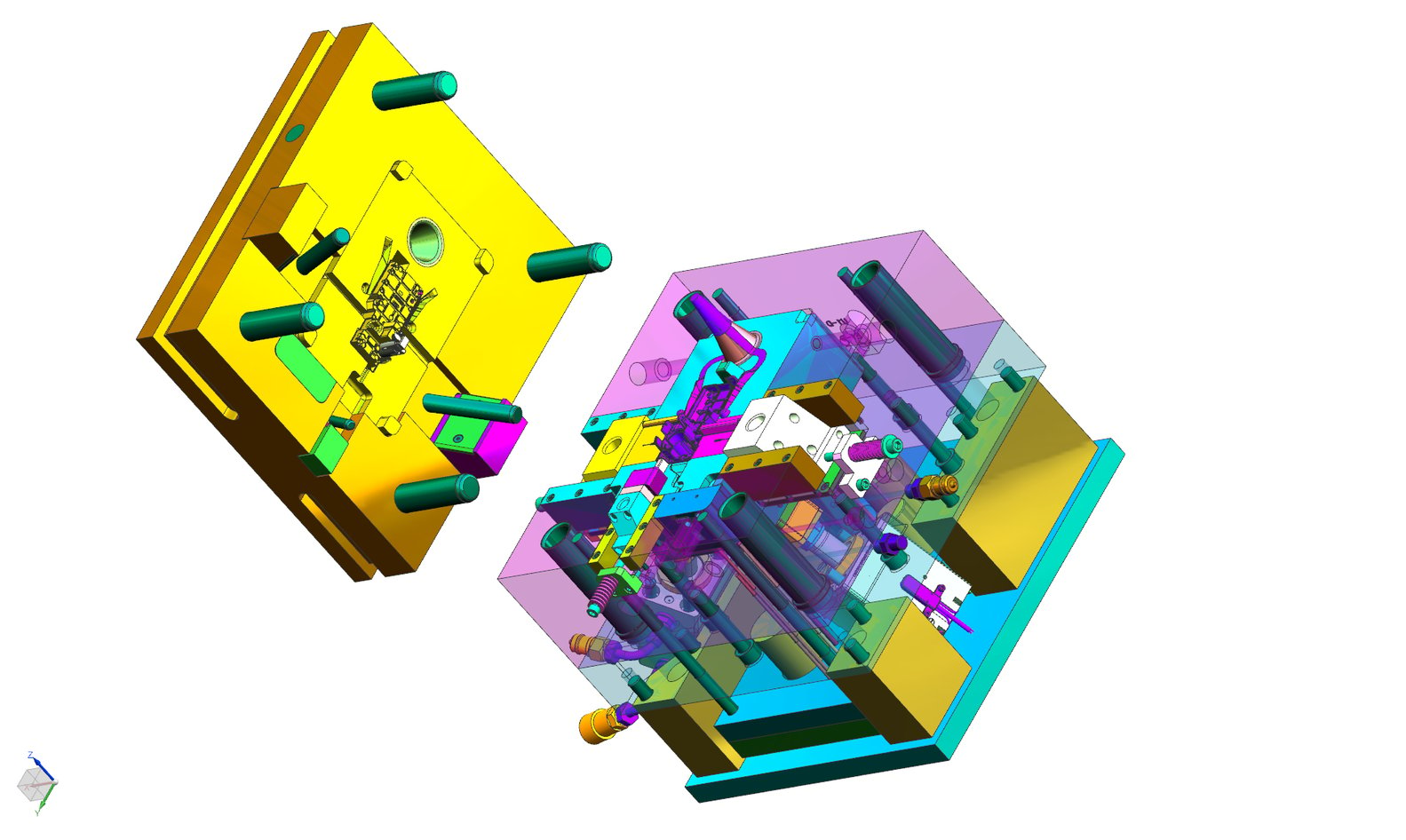
Preliminary Phase
Before starting with the actual mold design it is necessary to verify the manufacturability of the piece with high pressure die casting technology. In this phase the practicability of the process should be judged from a dimensional and geometrical point of view.
- Dimensional issues
In order to calculate the volume of the casting and the opening force we need to know the dimension of the component and the required number of cavities for each casting. These two data prove essential for studying the feasibility of the process. - Geometrical issues
The geometry of the component should include the drawing of the parting line. This line splits mold in two parts which allow mold opening and casting ejection. Component surfaces tilt depends on their position from parting line: surfaces have to be oriented in mold opening direction. Moreover, the geometrical tolerances of quotes, which can be found on the 2d model or can be indicated by the costumer, can be difficult to achieve due to the shrinkage caused by metal cooling. Quotes with identical tolerances can be more or less critical, depending on their nominal value: the higher the nominal value of a quote, the higher the difficulty to obtain the same value on the casting. This is called “manufacturing precision” and it is present in every technological process.
Because of this, it would be advisable for the manufacturer to make an arrangement with his client to elaborate the project within a co-design service, to find an agreement on the modifications of critical tolerances, on the geometry of the component and on the position of the die’s parting lines.
Once the manufacturability of the component has been verified, it is possible to move on with the actual mold design. The design of pressure die casting mold begins with the knowledge and the definition of the piece that is going to be casted.
In order to deeply analyze the different design phases, it is necessary to reconsider the previously obtained data regarding the weight (or volume) of the component, its projection area towards the die opening, and the number of cavities needed.
Number of cavities
To calculate the number of cavities it’s very important to consider hypothetical cycle time, number of pieces which have to be produced and cavities orientation on mold. It will be possible to choose between a single cavity mold or a multi-cavity mold.
When considering a multi-cavity mold, it is necessary to keep in mind that not only the complexity of filling and ejection phases will increase, but also that the handling of the production process may be affected by cavities’ disposition and dimensions of the products. An example of this can be found in logistics, since an higher number of impressions means a direct increased flow of material to move.
Projection Area
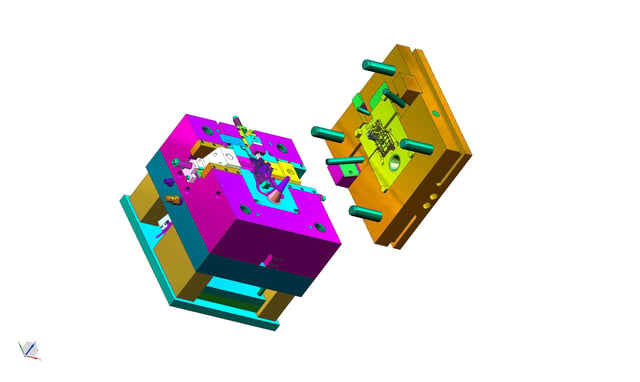
The projection area identifies the theoretical surface that can be obtained by the projection of a cavity on the plan which is perpendicular to the mold opening direction. Projection area plays a fundamental role in the designing phase: from it depends the opening force generated by molten metal on die walls. Depending on shape dimension orientation, stronger or weaker forces will be applied in mold filling phase. An excessively strong force may bring to a material overflow, and thus to the formation of burrs on the product profile. If the forces are too strong compared to the closing force of the press, the result could be a non-compliant product or, in the worst case, an unfeasible process.
In order to prevent this, the maximum force generated by molten metal in filling phase can be estimated. This force is equal to the product of the projection area, the maximum specific pressure of the machine and a pre-set safety factor.
This factor is based on metal dynamic push. Its main function is to offer a wide margin to counter the moment of maximum pressure at the end of the filling process, usually called water hammer. At the end of the process machine transfers both static and dynamic force, leading to a pressure pick that must be absorbed by the closing force of machine itself.
The closing force produced by the press depends on the press model and on the dimension of its stroke.
The push of metal and the projection area are the core elements to consider during mold design.
Volume and shape of the die
As stated above, the volume of the component is fundamental for the design of the mold. In addition to the total volume, it should be taken in account that massive components will suffer a greater shrinkage, caused by shrinkage rate increase, due to longer cooling times. Therefore the mold cavities should be sized accordingly.
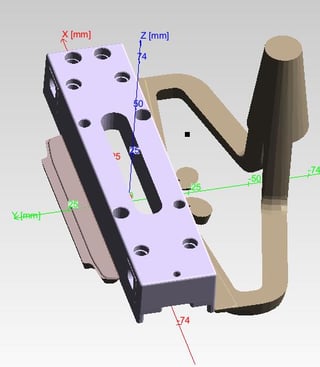
Moreover it is necessary to consider a number of variables that will determine the final size of the mold. Among these, the most prominent are the injection channels, the kind of die closing, the width of the runners and the presence of overflows.
- The plainest kind of mold closing is the open/close one, which has a single parting line placed in the simplest position possible. This system is ideal for those products with a clean, simple shape that can be easily ejected by the sole movement of the die’s halves and ejection system, but it cannot be used for structures with undercuts or complex geometries, which need transversal movements to be ejected. In these cases, the designer should add to the total die size the dimensions of slides and their movements.
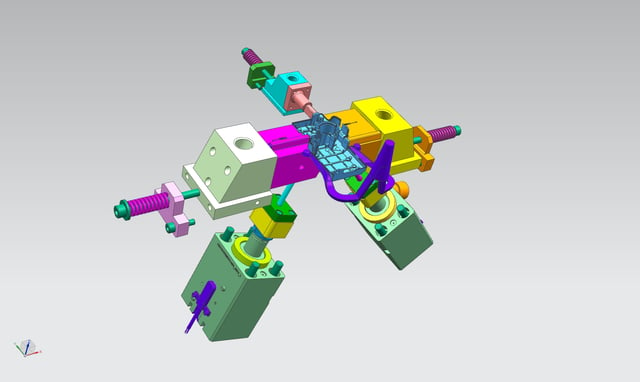
- The size of the injection channels depends on the position of the piece and gates, and on the number of cavities. Their shape must respect some requirements of fluid dynamics: for example, it is characterized by a decreasing section in the movement direction of the molten metal, so as to improve adherence on the mold walls. This progressive shrinkage leads to an accelerated flux and to a reduced chance of detachments of the boundary layer from channel walls. The speed grows throughout the funnel up to the entrance of the mold cavity, where the metal gets sprayed in the cavity. A smoother external layer prevents the formation of turbulences that may cause trappings of air or material, and even the erosion of the die.
- Overflows are similar to small wells placed in strategic points of the mold and they serve two main functions: the first one is to collect first metal shot, which is usually colder than the following flux. This strategy helps to avoid formation of cold laps and other aesthetical defects of the die casted product, improving its compactness and its superficial quality. The second function involves die temperature: by collecting molten material, overflows are turned into a source of heat that increases die temperature in those areas critical for the final casted quality.
- Another element that influences the mold size is the placement of channels for air expulsion system. This complex tunnels, called vents, let air escape the mold, avoiding gas entrapments in the metal.
Once positions and dimensions of these elements are decided, it is possible to move on to the next phase.
Simulation through semi-empirical models
After completing the initial design of the mold, it is possible to proceed with a simulation of die filling by the use of semi-empirical models.
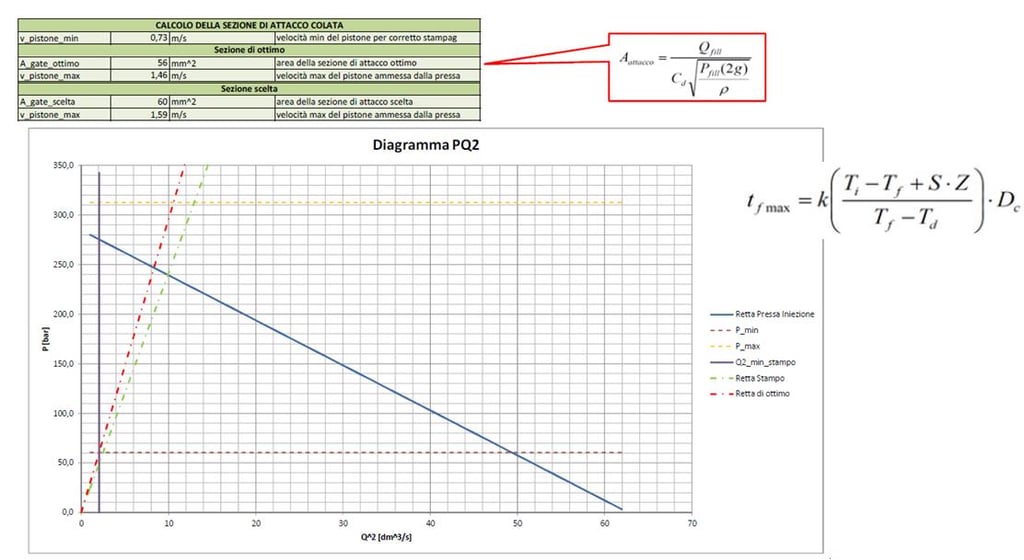
These simulations are used to calculate the ideal modality of mold filling: depending on the function of the casted piece, the filling process may vary. For components with a structural role it is better to enhance mechanical resistance and compactness, while for aesthetic components it will be necessary to obtain the best surface finishing possible, thus avoiding any superficial porosity and internal air trapping that may escape afterwards, damaging the external surface treatment.
By varying the filling time it is possible to alter these characteristics: the quicker the filling, the better the surface quality; on the contrary, a longer filling time at higher pressure will lead to a stronger, more resistant compound.
After completing these analysis it will be possible to spot in advance the eventual issues in casting phase and therefore to intervene on the design, before building the die.
To sum up, mold design for high pressure die casting begins from a manufacturability analysis, followed by a calculus of metal pushing forces and a study of channels position for injection, vents, and the necessary slides. Design and optimization of these channels can be done through the use of a simulation software to decide the ideal filling mode and to spot any possible issue. Once all of these phases are completed, it is possible to move on to the production of the designed mold.
To always be up-to-date with the last news in die casting, subscribe to our blog.
